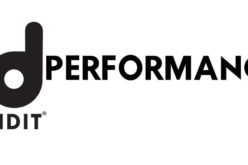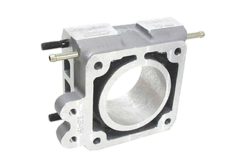Mopar Turns 80!

2017 marks the 80th anniversary of Mopar. The most hardcore Ford or Chevy fan knows the trademarked “Mopar” we all are familiar with started with the need for a name to put on cans of Chrysler Motor Parts Antifreeze. The “Special Activities” council worked on the names and logos for Chrysler and came up with Mopar and first used a bright purple arrow that was promptly rejected.
The term “Mopar” was made from combining the words “MOtor” and “PARts” and appeared early in the 1920s, but became its own brand in 1937. It was the branch of the Chrysler Corporation that dealt with original parts for Chrysler products including Chrysler, Plymouth, Dodge and DeSoto. The term Mopar was not widely used in Canada until the late ’70s…we had the Canadian equivalent, “CHRYCO.”
The final design was deemed to need a “Mr. Mopar” character, and even a Camel and all the “MAD MEN” brilliance was thrown at the public to help it be remembered. The story of how we got from a can of antifreeze to the most powerful four-door sedan available in 2017 is quite a ride.
The Mopar or CHRYCO parts were all built for Chrysler use with little focus going to the aftermarket car repair shops, with their need for replacement parts. In the Forties, Chrysler gave up much of its parts manufacturing to “wholesalers.” In the early ’60s, a new distribution system allowed Chrysler to have a competitive edge, and it began selling its own line of replacement parts though its own Depot system. Within a few years, this was a big success and a newer “Omega M” Mopar logo was created and is still in use today.

Starting with cans of antifreeze, how did Mopar become synonymous with high-performance Chrysler products? The cars that Chrysler Corporation designed were all built with the competing products of the other manufacturers of the “Big Three” in mind. Always trying to undercut the competition in price while upping the performance allowed, Chrysler produced some pretty great cars over the years. In the ’50s, Chrysler built some fast cars with Hemi engines, even providing dual four-barrel carburetors from the factory. These engines made their way into many race cars.
Introduced in 1951, the “FirePower” V8 with Hemi heads was used in the Chrysler and Imperial lines. A smaller Hemi engine was built for Dodge and DeSoto in 1952 dubbed “FireDome” and “Red Ram.” The Hemi engine uses a dome combustion chamber that allows more flow of intake and exhaust gases. All together, these are referred to as “1G” or first generation Hemis and have rear-mounted distributors.
A cheaper-to-build, Polyspheric-design head engine was introduced in 1955 based on the Fire Power engine, and was used in the Plymouths. Also known as “Poly” engines, they used the same block and crank but the heads used two concave domes, one each for intake and exhaust valves. This design only needed one rocker shaft as opposed to two rocker shafts on the Hemi motors of the time.
It was the reintroduction of the “Race Hemi” in 1964, though, that did more to kick the Mopar name into the forefront of every young Hot Rodder in North America. Coming in just one size to fit all, the 426 cu. in. V8 started with a conventional “Wedge” combustion chamber, but the “Hemi” combustion chamber produced the legendary power needed to be a contender.
The 426 Hemi mill may overshadow the other capable engines produced by Chrysler. From the small blocks to the big blocks, it is interesting to note many of the current engines derived in some way from engines that were designed in the 1950’s with slide rules and notepads.
Chrysler had produced many engines before the small-block V8 “A series” engine was introduced in 1955 and eventually came in many sizes – 277, 301, 303, 318, 326 cu. in. – and really captured the youth market and hot rodders. In 1964, the “A series” engine got its first major revision and dropped 50 lbs., and was dubbed the “LA” or “Light A.” They were available in sizes 273, 318, 340, and 360 cu. in, depending on models and years.

Regarding big-block engines, the Chrysler “B” engine was built from 1958 to 1978 as 350, 361, 383 and 400 cu in. The “RB” versions were built from 1959 to 1979 and are taller than the “B” blocks, hence the “RB” for raised blocks. This series came as 383, 413, 426 Wedge and the 440, and all are over-square, or have a larger cylinder bore than stroke length.
The engines are nothing without cars to stuff them into, and Chrysler did a good job taking two-door versions of its family cars and adding the needed parts to make these muscle cars go fast, as in the GTX, Road Runner, SuperBee and Chargers. Chrysler, along with GM, sort of came late to the Pony car craze and rested on its laurels using a Valiant-derived Barracuda and an only slightly better-looking 1968 and 1969 version.
All was forgiven with the introduction of the 1970 Plymouth Cuda’ and the new Dodge Challenger. The other pony car contenders were kicked to the curb with the introduction of a very capable road racing small-block version of the AAR Cuda/Challenger T/A, and fire-breathing 426 Hemis producing well over the claimed 425 horsepower in a relatively small, nimble car.
Although better late than never, these monster pony cars were thrown a curve ball of a hostile market place with skyrocketing insurance costs and soon-to-be skyrocketing gas prices. Not only did Chrysler drop the big engines from the smaller cars, they gave the bigger Charger and its corresponding Plymouth versions a Frankenstein-like facelift.
The ’70s were cruel to Carnuts, and Chrysler abandoned performance in favour of the Personal Luxury market of Cordobas and some other cars best not spoken of in polite company. With Lee Iacocca joining Chrysler, he parlayed all his vast knowledge of pony cars and gave us the K-Car….a front-wheel-drive car that spawned the whole Minivan craze.
Chrysler was in bed with Mitsubishi at this time, and imported many smaller cars and pickups and rebadged them as Dodge or Plymouth. The two bright spots were the turbocharged Omni GLH and the Dodge Stealth based on the Mitsubishi 3000GT. Although not a big seller, it showed Chrysler still had Carnuts in mind.

The introduction of the 10th-generation Chrysler 300, looking definitely more gangster than the previous model and based on a Mercedes platform, came with the right looks to appeal to old and young alike. The then-whopping 340 horsepower, from a newly-minted 5.7L Hemi engine. was like breathing fresh air into a dying man’s lungs, and this car was as breathtaking as the 2006 (four-door only) Charger was ho hum.
Then the craze of taking an old design, dusting it off and re-branding it as a new allowed the Mustang GT to score a huge success based off its first versions, so Chrysler took a stab at reintroducing the “new” Challenger.
Carnuts the world over rejoiced, as the new design mimicked one of the most beautiful designs in the world, and the awesome power of the new Hemi engines caused instant memory loss of the Aspens, Volares and Horizons of the 1970s. The 2008 “New” Dodge Challenger had all the great looks of the 1970 version and even an SRT8 version with a 6.1L Hemi V8 pumping out 425 horses and 420 lb-ft of torque.
To wrap up this Mopar “Love Fest,” Mopar did not rest on its laurels, building the new Challenger and Charger Hellcat versions that pump out 700 horsepower for the street, and also the Challenger Drag Pak more suitable for the strip. One can only imagine what the future holds…but Chrysler, please learn from the past and don’t try to sell us the “New Cordoba”….Corinthian leather or not!






















